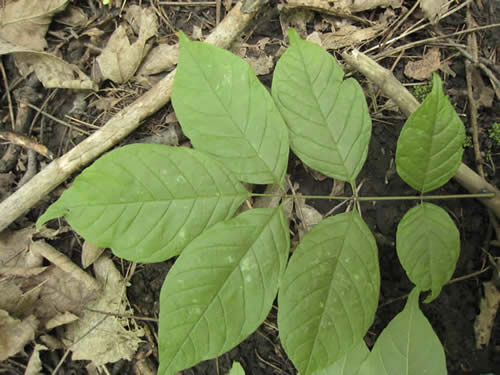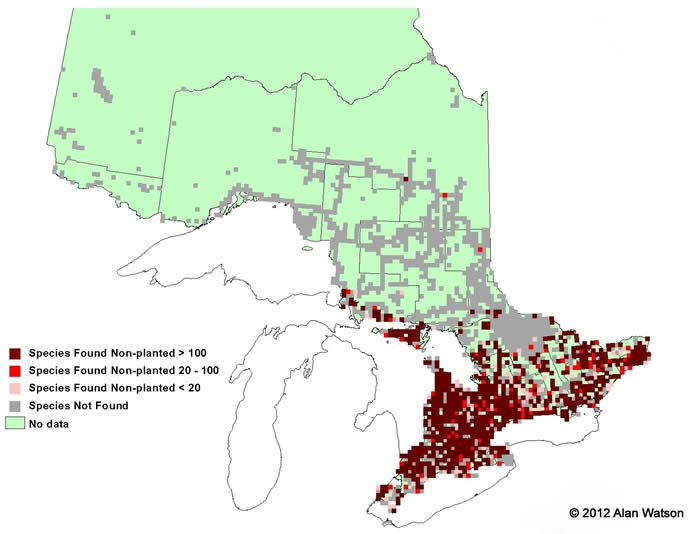white ash
white ash / Fraxinus americana
Ontario’s most common ash species, the white ash is named after the silvery undersides of its leaves and the pale bark of twigs and branches. Like all ashes, the white ash has opposite leaves, and the opposite formation of branches make ash species easy to identify in the winter. White ash wood is tough and strong, and was often used for farm and plowing equipment by early settlers. Many birds, such as Wood Ducks and Quail, feed on the seeds produced in slender samaras (winged keys) each summer and fall. Ash species in Ontario can be difficult to distinguish, but winter buds can help differentiate them. White ash also has fairly distinct grey bark with a diamond-ridge pattern, and hairless twigs. Unfortunately, white ash, as are all Ash species, has been severely impacted by Emerald Ash Borer beetle (Agrilus planipennis) and is critically endangered.
The bark of young white ash is smooth and pale gray, while mature trunks are gray with diamond furrows.
Fall colouring of leaves can vary from yellow to maroon to a dark purple, while leaves in the spring and summer are a vibrant green colour.

Leaves pinnately-compound with 7 opposite leaflets. Edges of leaflets are smooth or finely toothed, with pale green to whitish undersides. The underside of white ash leaflets are paler than most ashes.

Ontario Tree Atlas map of non-planted White Ashes. 1995-1999.
References
Farrar, J.L.. 1995. Trees in Canada. Fitzhenry & Whiteside Ltd. Toronto. ON. 504 pp.
Kershaw, L. 2001. Trees in Ontario: Including tall shrubs. Lone Pine Publishing. Edmonton. AB. 240 pp
Muma, W. 2011. Ontario Trees and Shrubs. [Online] Available: www.ontariotrees.com
OMNR, 2011. Ontario Ministry of Natural Resources: Ontario Tree Atlas. [Online] Available: http://www.mnr.gov.on.ca/en/Business/ClimateChange/2ColumnSubPage/267027.html
OMNR, 2008. Ontario’s Biodiversity: Species at Risk.